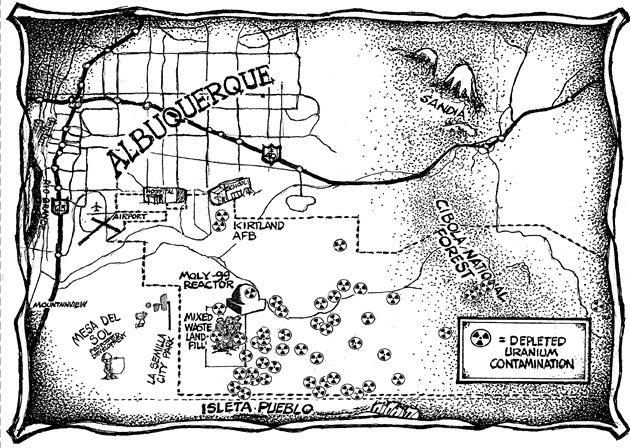
Pueblo of Jemez
Pueblo of Jemez is one of groups that won a landmark lawsuit against the U.S Department of Energy for failure to follow-through on adequate environmental cleanup during its 50+ years of nuclear weapons research, testing, and production. The Pueblo of Jemez is a federally recognized tribe located fifty miles northwest of Albuquerque. It encompasses over 89,000 acres and is home to ove 3,400 tribal members. Part of this settlement was the establishment of the MTA Fund (Citizens’ Monitoring and Technical Assessment Fund), which provided $6.25 million for tribes and non-profit organizations to assess and conduct independent technical and scientific studies regarding the multitude of technical, ecological, and health issues surrounding the nation’s nuclear weapons complex.
Clark University was chosen by the non-profit peace and environmental groups as the conservator of these reports to ensure they remain available to the public in perpetuity. The unconventional election of university as conservator is an innovative example, particularly within the era of Web 1.0, of higher education as protector and provider of information through wide dissemination.
The research and reports available in this series were conducted by Pueblo of Jemez with their allocated portion of the MTA fund.
If you have any questions or concerns please contact us at digitalrepository@clarku.edu.
-

Radioisotope Sampling in the Valles Caldera National Preserve
Pueblo of Jemez and Greg Kaufman
This report describes the results of radioisotope measurement in air samples obtained in the Valles Caldera National Preserve (the Caldera) in northern New Mexico. The study measured Gross Alpha and Beta radiation as well as concentrations of Plutonium, Uranium and Americium isotopes. The Preserve is the ancestral domain of the Jemez (Hey’-mes) Pueblo Indians and is the location of countless Jemez cultural artifacts, shrines and holy places. The Caldera is also a sensitive and unique ecosystem that supplies the Jemez people with traditional plants and minerals as well as game for food. The head waters of the Jemez River form in the expansive Valles Grande (see cover photo) within the Preserve and eventually flow through the Pueblo itself, 40 miles to the south, providing irrigation and drinking water to the 2500 inhabitants of the Pueblo.
This research was completed money allocated during Round 6 of the Citizens’ Monitoring and Technical Assessment Fund (MTA Fund). Clark University was named conservator of these works.
If you have any questions or concerns please contact us at digitalrepository@clarku.edu


